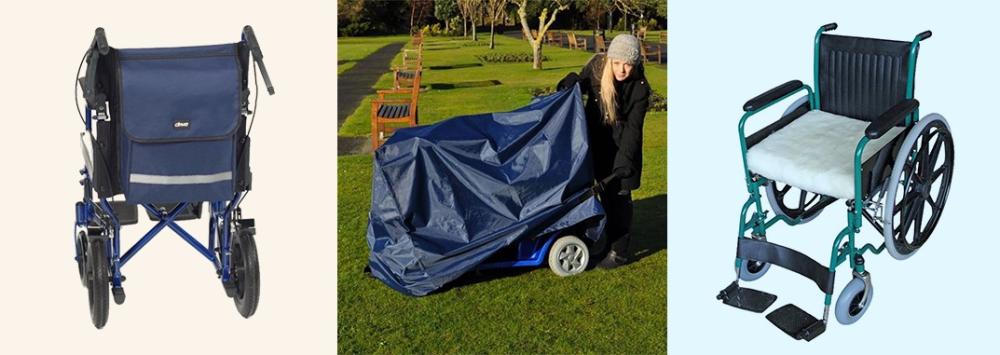
A Mobile Hold on Independence in Later Years
Sally Madeley-Carr, OT30 May 2022
For the elderly person (or person with reduced mobility) who lives alone, a mobility scooter will go a long way to keeping independence still in the picture.
A mobility scooter can be either class 2 or class 3:
- a class 2 mobility scooter is used on the pavement and can be used up to a speed of four miles per hour (4 mph)
- a class 3 scooter is often referred to as a road class scooter and may look a little more like a car than a mobility scooter. It is more spacious, can be used at speeds of up to eight miles per hour (8 mph) and can be driven on the road, though must not exceed four miles per hour (4 mph) on the pavement.
A condition for using a mobility scooter is that the user has either a physical disability or limited mobility, due to age, injury, or a medical condition.
Mobility scooters can travel on an incline of six to eight degrees, though heavy duty scooters can manage up to 12 degrees.
A mobility scooter can be used in the rain but drive more carefully and be conscious that heavy rain may affect the electrical controls.
About Mobility Scooters
Mobility scooters come as three-wheeled, four-wheeled and portable.
A three-wheeled scooter will be more compact and prove best for indoor use, as it manoeuvres more easily around corners. Three wheels are not as stable as four wheels and so try to avoid using a three-wheel design on grass, gravel, or uneven surfaces.
A four-wheeled scooter is best for outdoor use. It is also a wider scooter and may have larger wheels.
A lightweight, travel, mobility scooter can be a boon for socialising, as it dismantles easily and can fit into the boot of a car. Some can be very light in weight though, if considering purchase, it pays to check the weight of the individual pieces, and also its maximum user weight, to be sure it matches the potential user's requirements.
A mobility scooter does not need liability insurance, though it is recommended that a user does take out insurance, as it can be used in the case of theft, damage to the vehicle, or negligence claims which could be made against the user.
You don't need a licence to drive a mobility scooter but you may still need to register it with the DVLA. A mobility scooter does not require that road tax be paid either.
Mobility scooters can carry maximum weights of between 250 and 350 pounds (depends on the make). If the user weight exceeds 350 pounds, a heavy duty bariatric mobility scooter can take weights in excess of that weight.
Tyres
Tyres for mobility scooters can be either pneumatic or solid.
Pneumatic tyres house an inner tube which is filled with air. These tyres offer shock absorbing benefits and so give a smoother ride.
For general guidance, tyre pressure should be set at 2 - 2.4 bar (30 - 35 psi). Underinflated tyres may negatively affect your control of the scooter. Over inflated tyres could burst, possibly hurting you and maybe damaging your scooter.
Solid tyres need no maintenance but don't offer as smooth a ride. As to wear and tear, solid tyres do not necessarily last any longer than pneumatic ones.
Once you have selected the mobility scooter which most matches your needs, seek advice on puncture proof tyres and whether your lifestyle (i.e. preferred terrain) might indicate that these tyres would prove a better choice.
Choosing Personal Mobility Scooter Accessories Which Work for You
There are many mobility scooter accessories that can enhance the use of a mobility scooter, both for indoor and outdoor use:
Mirrors - when changing direction in your mobility scooter, mirrors mean that you do not have to twist your body to look over your shoulder and will keep you safe from hurting yourself physically, as well protecting others nearby, or damaging your scooter.
Travel bags come in various shapes and sizes:
- A rear travel bag attaches to the back of the scooter seat and some designs offer additional pockets inside, as well as exterior side pockets. Bags with high visibility piping will make travelling after daylight safer.
- Scooter side bags make it easy to access items needed quickly e.g. a mobile phone, money and medication.
- A pannier bag is designed to fit over the armrest of a mobility scooter and its handle allows the bag to be used for carrying, as well.
Weather Conditions can be handled with ease:
- A weatherproof poncho keeps the scooter user dry in wet weather, with hands free to drive.
- A weatherproof scooter cape keeps both you and your scooter dry in wet weather. A transparent panel over the control panel allows you to continue on your journey.
- Scooter / storage cover - if your scooter is momentarily parked in wet conditions, a scooter cover will protect it from the elements. Scooter covers are also ideal for when storing your scooter when it is not in use.
- A waterproof panel cover protects the control panel, should you be out and about when it starts to rain. Your hands will fit snugly underneath, to allow you to continue your journey. It will also give you peace of mind that the electrics are safe and dry, should you be in a building when it starts to rain.
- Sun canopy - when purchasing a sun canopy, check that it is made of a durable fabric, so that it can also protect against rain and snow.
Other mobility scooter accessories include:
- Lap straps - a lap strap is a sensible accessory to purchase, as it helps the user maintain posture and prevents falling out of the seat, should the user encounter a bump in their path.
- Crutch holders -a crutch holder is attached to the universal fitting on the scooter, with the crutch or walking stick being held in place by Velcro strips. Some scooter bags have high side sections, specifically designed to allow for carrying crutches or walking sticks.
- Ramps - a ramp can help make access to cars easier and facilitate entry to some buildings which make access a little difficult (e.g. even just one step).
- Oxygen tank holders - though not needed by all mobility scooter users, this holder can fit to any mobility scooter that has an under the seat accessory bar.
- Phone and accessory holders - this small bag can be attached to either armrest, via Velcro straps.This small pocket can make phone, cash, credit cards and medication easily available.
- Headrests - not everyone will feel a headrest to be important and so it is a matter of deciding whether your health condition might benefit from this extra support to head and neck.
Going the Extra Mile
Enhancing the travel experience with mobility cushions or sheepskin seat covers will make sitting much more comfortable and will also reduce the likelihood of developing pressure sores from sitting over prolonged periods.
Mobility cushions come in different materials:
- Foam cushions conform to the user's body shape and so offer some stability when in motion. Foam cushions come in a variety of thicknesses.
- Gel cushions are made up of a gel pocket which is surrounded by foam. This material enhances pressure distribution and so gives a comfortable experience. Gel cushions may require an element of maintenance, as kneading the cushion may be needed to redistribute the gel.
- Air cushions give both shock absorption and pressure relief. Air cushions require an element of maintenance, as air cells can deflate on occasions.
- Honeycomb cushions can soften when heated and harden again when cool. This material allows for even weight distribution and provides shock absorption features, as well.
Summary
Please note that mobility scooters are not allowed on 'cycle only' paths.
Whilst a class 3 mobility scooter can be used on the road, it is much safer to drive on the pavement and only on a road, when no pavement is available.
Always make sure your battery has enough charge for the journey you will be making.
Using a mobility scooter to climb hills will drain the battery faster.
When choosing your mobility scooter, take into consideration that, if you intend to use it indoors, you need to measure door width against scooter width, to be sure that it can pass through relevant doorways.
For the tyre pressure which exactly matches your mobility scooter, check the psi rating on the side of the tyre, refer to the user manual, or contact the supplier for advice and guidance.
If using the scooter for a prolonged period, enhance the sitting experience by using mobility cushions or plush seat covers.
When looking at the array of mobility cushions available, bear in mind that too high a cushion might inhibit your ability to get your knees under a table or desk height.
Make sure that you accessorise your scooter with items which feature high visibility markings, to help others see you when you are crossing a road, or travelling by road (class 3 only for travelling by road).
Always remember that you will be using your scooter amongst walkers, people with pushchairs, runners, cyclists and dog walkers. Take care at all times.

Sally Madeley-Carr, OT
Sally qualified as an Occupational Therapist in 1996 and is a well-respected professional in the field of rehabilitation equipment and living aids. She has worked in private practice and within the NHS, developing a broad experience with adults and children. Click here for Sally's registration with the Health and Care Professions Council. The HCPC regulates health, psychological and social work professionals in the UK.